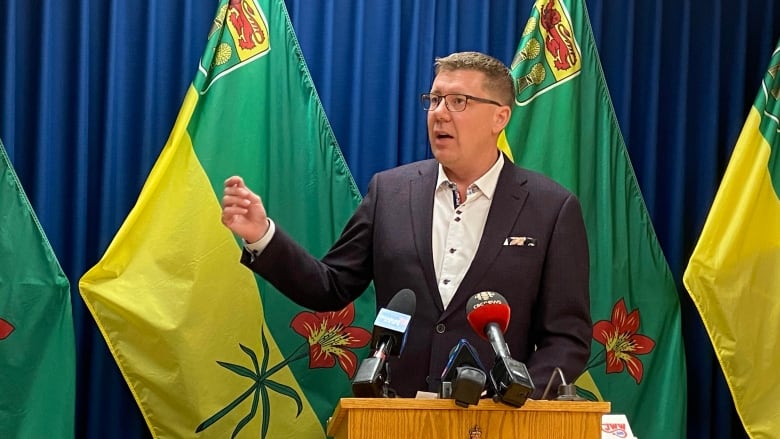Sask. Party's successful election strategy similar to previous NDP governments: professor
Saskatchewan Party won or leads in 50 of 61 races after Monday's vote

To secure a historic fourth consecutive electoral majority, the Saskatchewan Party took a page from the previously dominant NDP government's playbook, says one longtime follower of provincial politics.
Ken Rasmussen,professor of public administration at the Johnson Shoyama Graduate School of Public Policy, said he expects Premier Scott Moe's federal government-bashing to continue following his Monday night election win,as will his frequent references to farming and the resource sector.
But he saidmuchof that rhetoric is aimed atpleasingthe party'srural base and fending off advances from the Buffalo Party on the right, which finished second in several races.
Like past NDP premiers, Saskatchewan Party governments under Brad Wall, and now Scott Moe,havetaken a centrist approach in their actual policies, says Rasmussen.
"The irony is they actually govern like the NDP.They have no real free-market fundamentalism. Again, they pledged not to privatize Crown corporations," he said.
"There's very little social conservatism. It's very appealing to a wide swath of voters."

After Monday's voting, the Saskatchewan Party was elected or leading in 50 of 61 constituencies, pending a count of the mail-in ballots in the coming days. That includes winningevery rural and small urban area of the province, much as they have for the past decade.
Rasmussen said the province appears more united under the Saskatchewan Party than it has been sincethe CCFand NDP governments that seemed invincible in the lastcentury.
"We are getting more monolithic in our preferences than almost any time in the past," he said.
That could lead to problems for rural areas, he said. The Saskatchewan party campaign included very little for rural voters, says Rasmussen.
"The Saskatchewan Party doesn't have to worry about rural votersthey've got them in the bag. And in fact, it's to their detriment in rural Saskatchewan, because parties tend to ignore the voters that always vote for them," he said.
"They're really trying to gain the support of urban voters."












_(720p).jpg)


 OFFICIAL HD MUSIC VIDEO.jpg)
.jpg)



























































































